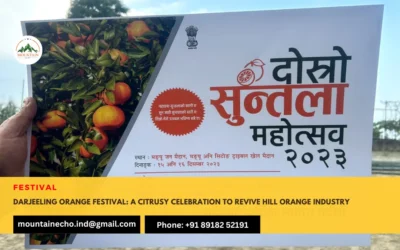Festivals of India: Kut Harvest celebrations in Mizoram, Manipur
The Kut Festival is a major harvest festival celebrated by the Kuki, Mizo, and Chin tribes, who primarily inhabit the hilly regions of Northeast India and Myanmar. Kut Festival usually takes place during the month of November and December, after the completion of the agricultural harvest. The festival is a time for thanksgiving and merrymaking and is celebrated with great enthusiasm – people dress up in traditional attires and participate in various dance, music, and sports.
Mountain Echo now has WhatsApp Channel. Please join us there.
Kut festival is celebrated by the Kuki-Chin-Mizo tribes bountiful the harvest and is a time for the tribe to express their gratitude to the deities. One of the main highlights of the Kut festivals is the famous Bamboo Dance, locally called as Cheraw dance.

This unique dance form that involves a group of people dancing between a set of bamboo poles that are held by two people. The poles are rhythmically moved together and apart, and the dancers move in and out of the poles in a synchronized manner without getting their feet trapped between the bamboo sticks. The dance is accompanied by traditional music played on drums and gongs making is a spectacular sight to watch.

Another important aspect of the Kut festivals is the traditional ritual of sacrificing Mithun or Gayal (Bos frontalis), a large domesticated bovine species indigenous to the Northeast region.

During the Kut Festival, the Mithun is decorated with colorful cloth and ornaments and is offered special food and care for several days before the sacrifice. The sacrifice of the Mithun is considered a symbolic offering to the gods and ancestors and is believed to bring good luck and prosperity to the community.
After the sacrifice, the meat is distributed among the members of the community, and a feast is organized to celebrate the occasion. It should be noted, however, that the Mithun sacrifice has been a topic of debate and controversy in recent years, with some animal welfare activists and organizations raising concerns about the ethics and legality of the practice. The issue is complex and multifaceted, and involves considerations of cultural heritage, animal rights, and social norms.



